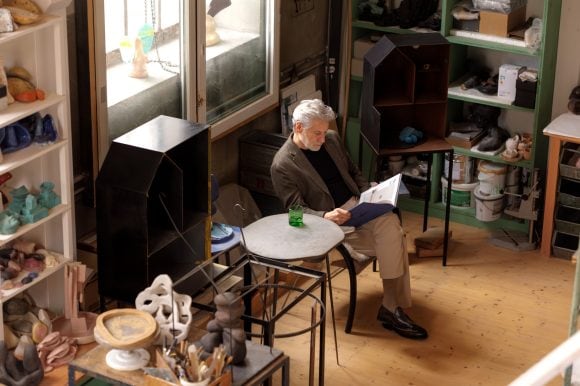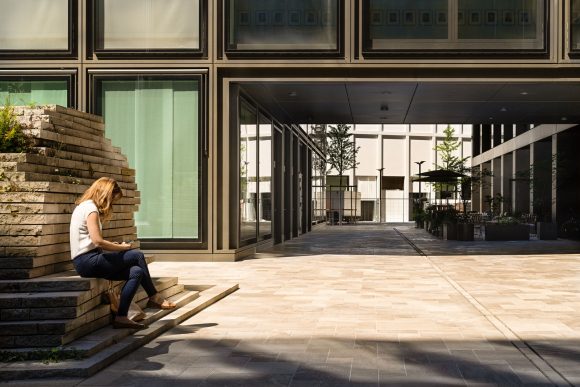Executive summary
The primary role of our built environment is to meet human needs for shelter, connection, work, and services. Yet, the inadequacy of numerous current buildings contributes to many of society’s problems, like poverty, ill-health, and climate change. In this report we look at how the social impact of our built environment can be optimized by retrofitting existing buildings; expanding the stock of adequate, affordable housing; and improving construction practices.
Improvements to the built environment can contribute to achieving various other sustainability goals, like reducing poverty and inequality, improving health outcomes and physical comfort, ensuring more equitable access to education, and improving the resilience of the energy infrastructure.
The 3 R’s of socially inclusive new construction
In this report we introduce a three-pillar framework to determine whether new development projects fulfill the criteria to be considered socially inclusive and, therefore, sustainable. We call this framework the 3 R’s—Right building; Right way; Right place.
- Right building: Is the building economically accessible to the local community, and does it fulfill its needs? Whether the need is more housing, community areas, or commercial space, it requires the correct building type, at the needed capacity with the right facilities, and, with a view to the future, ease of convertibility to an alternative use.
- Right way: Is the building being constructed in a way that benefits the local economy, e.g., using local materials and suppliers where possible, providing employment for local people at living wages? Is it minimizing social costs e.g., enforcing safety protocols onsite and ensuring workers are not being exploited offsite? And is it designed inclusively, e.g., incorporating natural light, efficient insulation, healthy ventilation, and, where appropriate, space for communal areas?
- Right place: Is it located in an area with good connection to others, to public transport, in reasonable proximity to job opportunities, and outside of areas prone to environmental and social risks?
Addressing the global shortage of affordable housing
Housing in the biggest developed markets has become increasingly unaffordable in recent years—between 2019 and 2021 the number of severely unaffordable markets rose by 60%. In emerging markets too there are severe shortages—the number of urban residents living in slums or slum-like conditions amid a lack of adequate, affordable housing has hit an estimated 1.1 billion, with a further 2 billion more projected over the next 30 years. Addressing this problem will require significant investment, an estimated USD 17tr in emerging markets alone, with 90% of that in Africa and Asia. While individual markets have their own particularities, we outline five key areas holding back the supply of affordable housing and suggest potential reforms. These include regulation and policy; finance availability; skill shortages; insufficient harnessing of innovation; and lack of stakeholder coordination.
Part of the solution is likely to be provided via blended finance instruments to address liquidity constraints and funding bottlenecks.
The social opportunity from retrofitting existing buildings
The profound social effects of the existing built environment and the significant potential for both positive and negative direct impacts as well as externalities make building retrofits a key part of the toolkit for reducing social harms and improving societal outcomes. Retrofitting can contribute to revitalizing economically struggling communities, creating jobs, reducing energy bills, improving local human capital via the benefit to physical and mental health outcomes, and reducing harmful emissions. For this to be meaningfully achieved, however, retrofitting needs to take place at scale. For that to happen, communities must be brought on board. In this sense, retrofitting and area regeneration are symbiotic processes, with the success of one partially dependent on the other. Aligning communities with retrofitting priorities requires communicating and demonstrating the benefits of retrofitting to individuals and the broader public sphere.
Two key factors to spur large-scale retrofitting
Perhaps the most straightforward route is establishing and expanding a retrofit supply chain for governments at local and national levels to commit to retrofitting social housing stocks, i.e., government-owned housing. This has the advantage of laying out a clear policy path and can provide a pipeline of projects, clarity to market participants, and a signal to expand retrofitting capacity.
But most buildings are privately owned. Achieving community-level retrofitting in the private sector is likely to demand the kind of coordinating role played by “one-stop-shops” both to group retrofitting projects to reduce costs, and to effectively coordinate stakeholders across the value chain in public and private spheres.
Related publications
Rethink, rebuild, reimagine—Laying the foundation for better buildings
Rethink, rebuild, reimagine—Laying the foundation for better buildings
Responsible for 37% of global emissions, decarbonizing the building sector is crucial to achieve Net Zero targets. Find out how we get there and the role of various stakeholders.
Retrofit revolution—Why the world needs one and how we can achieve it
Retrofit revolution—Why the world needs one and how we can achieve it
We make the case for a retrofit revolution, not just to bring the building stock into line with the Paris climate goals, but also to address social challenges like fuel poverty and the health issues caused by drafty or poorly ventilated buildings. We then outline the key factors holding retrofitting back, and describe seven essential steps which can help to unlock it.
Under one roof—Public and private roles to catalyze sustainable building
Under one roof—Public and private roles to catalyze sustainable building
We assess the opportunities for public and private stakeholders to collaborate in the drive to decarbonize the global buildings sector. Market barriers require public institutions to provide incentives that move the needle, while the level of capital required, and the need for innovation on some technologies, creates an important role for private institutions too.










